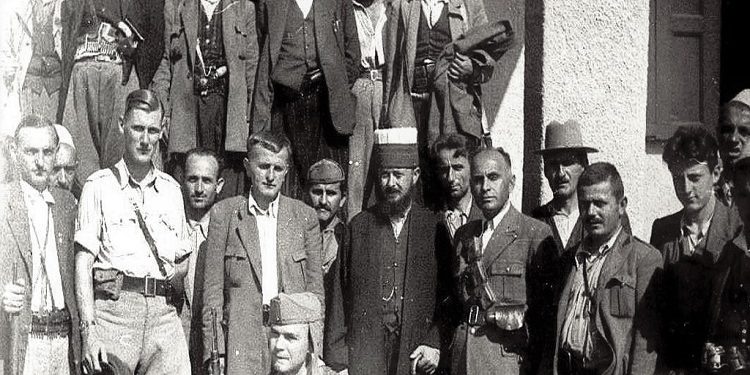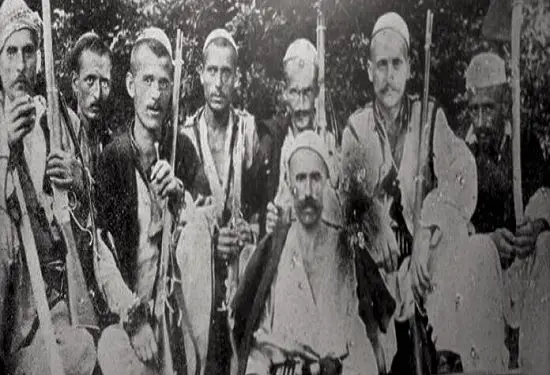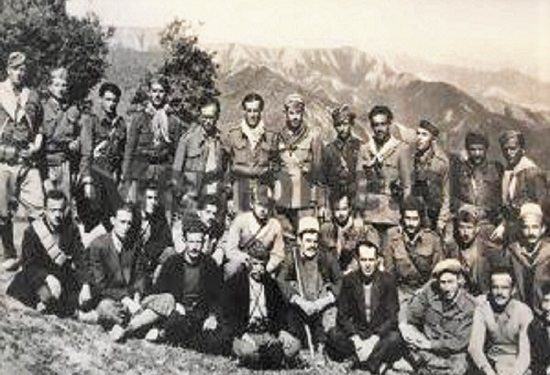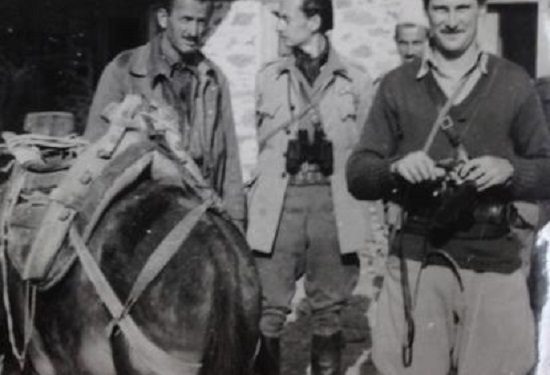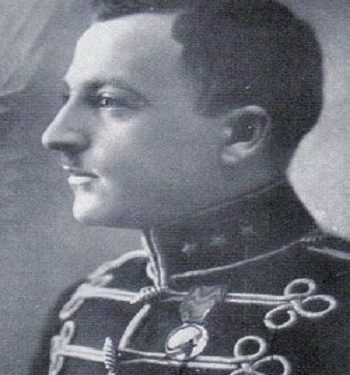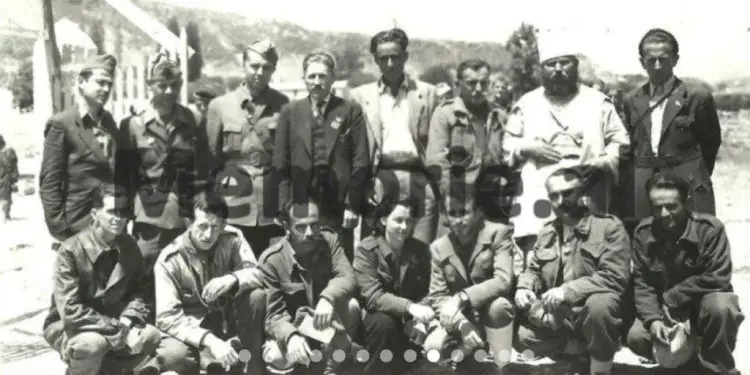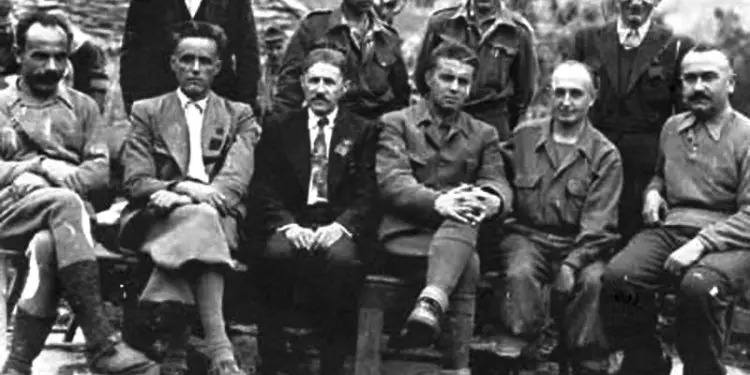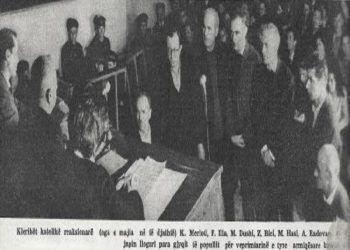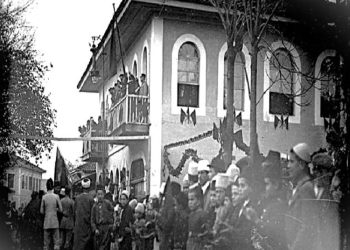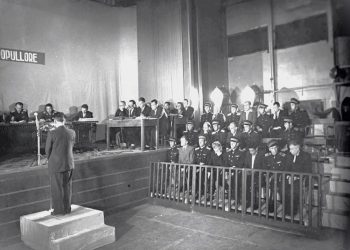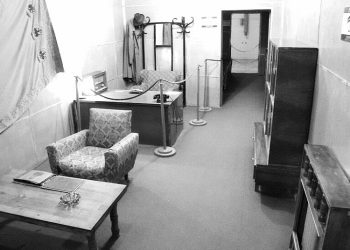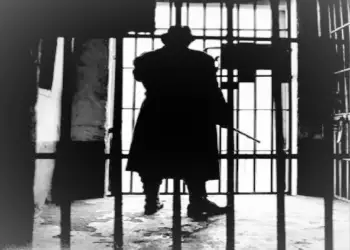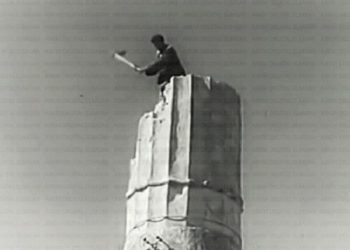From Dodë Progni
The third part
-The massacre of Herec – criminal act of the Yugoslav and Albanian communist leadership-
I – THE “KRYEZIU” MOVEMENT
Memorie.al / “Kryeziu Movement” was the name of the Nationalist Anti-Fascist Movement, in Kosovo and Northern Albania, during the years 1940 – 1944, at the head of which were the brothers from Gjakova, Gani, Said and Hasan Kryeziu. Its strategic goal was the organization of the Anti-Fascist Movement in Kosovo, its liberation from Nazi-fascists, the separation from Serbia and the union with the mother country, Albania. The Kryeziu brothers, like hardly anyone else in Albania at that time, had understood since the beginning of the Second World War that the most possible way to solve the Albanian national problem was to secure the support of a great Western power, such as Britain e Madhe, and that such a thing could only be achieved by fighting against the Nazis.
Continues from last issue
Across the border, at the end of 1944, the Albanian leadership followed the Kryezins to annihilate them or arrest them and put them on trial as agents of the Anglo-Americans. And the end of this trial was known, since as Peter Kemp claimed, “For the communist rulers of Albania, collaboration with the British was a much greater crime than collaboration with the Germans.”
In these very difficult circumstances, faced with the low provocations of the communist forces, the brave and wise commander, Gani Kryeziu, did not fall into their trap, to make an armed resistance, which would mean a fratricidal war, but dispersed his forces, ordering that those who wished to continue the war together with the communist partisan forces, while others could return to their homes. Ganiu with his brother, Hasan Kryeziu and the 22 bravest and most loyal comrades, settled in Sulejman Kryeziu’s towers in Gjakova, after their towers had been burned by the Germans. This marked the destruction of the ‘Kryeziu Movement’, the only effective non-communist resistance against the Germans, in Northern Albania.
– THE MASSACRE OF THE HERETIC:
On the evening of December 28, 1944, twenty-six Albanians, unarmed and unarmed, after being taken from the towers of Sulejman Kryeziu, and sent to the hills of Hereçi, (municipality of Değan), were confronted by hundreds of Serbo-Slavs of armed to the teeth. There were 22 comrades of Gani Kryeziu and 4 sympathizers, friends and supporters of him, who were killed and massacred in an inhuman manner.
This painful event, although it was not published for over 45 years of communist rule, neither in Albania nor in Kosovo, entered and remained in people’s memory as a barbaric execution of the ugliest of the Slavic-communist type.
It is impossible to describe, let alone imagine, the tragic scenes of that December evening, which the Hereçi hill experienced. The stories of Malë Shyti from Berisha and Zenel Adem from Gashi, whom fate brought out alive from that guillotine, have come from mouth to mouth, until today. They are incredibly painful, chilling and sad for anyone who hears them. The anti-Albanian hatred and the degree of ferocity of the Slavic-communist executioners, during this unparalleled massacre, exceeded the proportions of rabid beasts.
After the executioners had removed the clothes from the arrested, and put them under the torture of the low temperature, that December evening, which had dropped to about -15 degrees C, they began to hit them with picks and shovels. Breaking hands, feet, and piercing with bayonets was the pleasure of these executioners, eager to see as much wounds and blood on the bodies of Albanians. A terrible scene, a real carnage, that continued for about two hours. After two hours of fighting, the Slavic beasts had defeated the Albanian people.
On the frozen and bloody ground of Hereçi hill, there were dead: – Hasan Kryeziu and Xhevat Kryeziu from Gjakova, – Selim Malë Dula from Paci i Bytyçit, – Brahim Musli Demaliaj from Vladi, – Shaban Sadik Saraçini from Berisha, – Shpend Zeqir Prëndgjoni, together with his son Sali Shpend Prëndgjoni, from Zherka, – Ukë Arif Prëndgjoni and Imer Halil Prëndgjoni, also from Zherka, – Metë Rexhe Saraçini, -Col Isuf Koka, -Sadri Dash Gjonpapaj from Berisha, – Sali Shpend Mujaj from Paci, – Muse Avdyl Neza from Leniqi, – Muse Zenel Ahmetaj, – Ali Miftar Zhuta from Kepenek, – Rame Osmani, – Shpend Halili, – Mehmet Musa from Gashi, – Zmajl Sadik Koka from Berisha, – Rexhë Mehmeti from Paci, – Mehmet Ali Mehmetaj from Vladi, – Zenel Miftar Zhuta and Shaban Ali Bajrami, from Kepenek.
These men were outstanding fighters, the pride of the Kryezian forces, distinguished in the battles against the Nazis, and not victims who were sacrificed for their narrow interests, or those of the Kryezians, nor adventurers and mercenaries sold for money, as they were described by communist propaganda, during 45 years. They were martyred for Kosovo and the free, democratic Albania, for the unification of the Albanian ethnic lands.
Their standing next to Gani Kryeziu in those difficult moments, when he was targeted by the Slavo-communists, to be annihilated, was an act of courage and bravery, which stemmed from the common nationalist and democratic ideal of these fighters with the commander of from them, as well as from the high virtue of faith and Albanian manhood, which characterized these highlanders.
After the execution, their corpses, massacred in an unprecedented manner, were dragged by the executioners and thrown one on top of the other, in a pit that had been opened by the villagers for another purpose, creating perhaps the first mass grave of Albanians executed by Serbian-Slavic-Communists, after the Second World War in Kosovo. Unfortunately, the bloody Serbian-Slavic hand would not stop here, with the Heresy. She would continue with the creation of dozens of other mass burial sites, where she buried thousands of Albanians.
With this criminal act, the Yugoslav communist leadership took the first step in their strategy of violence and terror against the Albanian people of Kosovo. After the massacre of Hereçi, it carried out other massacres, such as the suppression of Shaban Polluzha and his forces, the elimination of any Albanian who showed nationalist views, to reach the massacre of Tivar, 1946, where the Serbian Slavs annihilated over 4,700 boys young Albanians, to continue with the Reçak massacre, without interruption until the liberation of Kosovo, in June 1999.
On the morning of the day that the massacre of Hereçi was to be carried out, the forces of the OZN had called Gani Kryeziu to the Gjakova District Council, supposedly to consult, but treacherously, they had handcuffed him, accusing him in a completely absurd as: “collaborators with the Germans and the quisling government of Tirana, -opponent and enemy of the National Liberation War” etc.
After they kept him for about a year under the torture of the investigation, on October 27, 1945, in Belgrade, they held a formal, typical communist trial, with false accusations and manipulated witnesses, sentenced him to 5 years in prison, and locked him in prison cells of Sremsko Mitrovica, of which he did not come out alive.
His death in prison, completely unexpected, in 1951, at the age of 51, when he had completed his sentence and was awaiting release, was learned from a telegram that the Prosecutor’s Office of Sremsko-Mitrovica sent to his family in Gjakovë, but the cause death which was highly suspicious, was never shown or taught!
The massacre of Hereçi, the physical elimination of Gani Kryeziu and his closest comrades-in-arms, were indeed carried out outside the borders of Albania, with the direct perpetrators being the Yugoslav side, but this in no way exempts the Albanian side from responsibility. This criminal act was not only a desire, but also an agreement of both parties. This has been affirmed by Enver Hoxha himself, in his book: “The Anglo-American danger for Albania”.
When he tells, allegedly, his dispute with the Yugoslavs, Veilimir Stoinič and Nijaz Dizdarević, regarding the attitude towards the Kryezins, in 1944, he claims to have told them: “The interest of both our parties and our common struggle requires that these enemies should be severely punished…! Such people deserve a bullet to the forehead”. “Our National Liberation Army,” he says, “captured these thugs (word for Kryezinjët, D.P.) and sentenced them to death.”
The fundamental reason for this strict attitude that Enver Hoxha held towards the Kryezinje is clearly explained by Peter Kemp, when he says: “For the communist rulers of Albania, collaboration with the British was a much greater crime than collaboration with the Germans “.
In fact, the Chief Blacks had not only collaborated with the British, but had also won their sympathy and support. They had received from the British, high evaluations as patriots, as anti-fascist fighters and as democrats, with a western political orientation. For their participation in the Anti-Fascist War and the pro-Western democratic ideals they aspired to, they became known, even in the high circles of Anglo-American politics.
Enver Hoxha, who had decided to make Albania communist, connect it closely with the ‘Red East’, and sever all ties with the capitalist West, put the Blacks at the top of the list to eliminate them politically and physically. As pro-Western and anti-communist, they would be a serious obstacle to his future power.
After having failed in his efforts to bring the Kryezni into his “kular”, through a government post, and to eliminate them later, as he did with some other nationalists, Enver Hoxha, in cooperation with the Yugoslavs, worked out the plan for the urgent elimination of the leaders, accusing them of being: “war criminals and collaborators of fascism”.
The Yugoslav side took over the execution, not only because they were Yugoslav citizens, as Enver Hoxha says, but because they were very interested in a quick and safe execution of them. The Serb-Slavs considered the existence of the Kryezin extremely dangerous. They were seen as a potential danger and, as a burning “fog”, who at any moment could spread the flame of an anti-Slavic nationalist uprising in the exploding Kosovo of that time, so their execution could not be trusted to anyone else.
On the other hand, Enver Hoxha, at that time, was neither good enough nor brave enough to openly conflict with the British, on the issue of the Chiefs. The British, as we have mentioned above, not once during the War, had expressed sympathy for their positioning on the side of the Anti-Fascist Front. They had even supported them throughout the War. In the end, for Enver Hoxha, it was important that the elimination of the Chiefs was certain.
The liquidation of the Kryeziu Movement and the Kryezians themselves is one of the typical examples of cooperation between the Albanian and Yugoslav communist leadership for the elimination, in Kosovo and Albania, of anti-communist nationalists, Western-oriented intellectuals and people with influence in the people, who had thought and were tried, for the ethnic, free and democratic Albania.
When we talk about the authorship of the Yugoslav and Albanian communist leadership, in the elimination of the Kryezin and their anti-fascist movement, it cannot be overlooked, the negative role played by the communist leaders of Kosovo, in the realization of this criminal and anti-national act. When it came to opposing the Kryezins and their anti-fascist movement, they were always ready to serve with more zeal both the Albanian communist leadership and the Yugoslav one.
Former members of the staff of Kosmet and the Provincial Committee of the Yugoslav Communist Party for Kosovo such as: Xhavit Nimani, Mehmet Hoxha, Fadil Hoxha, Ymer Pula, Ali Shukria, etc., who, just like during the War, and after it, when they had occupied important leadership positions in the communist party and state in Kosovo and Yugoslavia, they never stopped the war against the Kryezins and their family.
As stated above, during the years of the War, the rivalry between the Kosovar communist leaders and the Kryeziu brothers was fierce and continuous. But in 1944, when the victory of the anti-fascist coalition against Nazi Germany seemed imminent and certain, the headquarters of Kosmet and the Kosovar communist leaders hardened their stance against the Chiefs. This happened because the Kryezins were well-known, respected figures with indisputable authority in Kosovo. As active participants in the Anti-Fascist War, they had won the sympathy and support of the Anglo-American allies.
While with the clear positioning on the side of Albanian nationalism and irredentism, which aspired to the creation of ethnic Albania, and with the open and determined anti-Slavic and anti-communist attitude, which they had maintained during the years of the War, they had gained wide support, in the entire population of Kosovo. For these reasons, the communist leaders of Kosovo, contenders to take leadership positions in post-war Kosovo, did everything possible to eliminate the Kryezins, who had long-standing political, ideological and class rivals and opponents. To achieve this goal, they cooperated closely with the leadership of the Communist Party of Yugoslavia and the Communist Party of Albania, constantly standing at the forefront of every destructive action against the Kryeziu Movement.
Opposition to the Chieftains was primarily related to their attitude towards the future of Kosovo. This was expressed openly by Fadil Hoxha, in a letter sent to Liri Gegë, in the fall of 1944, who, in a critical manner, said to the Chiefs: “The Chiefs call Kosovo an undivided part of Albania and that they want Kosovo, come out united with Albania, after the war”.
Based on many facts and documents, without any doubt, it can be said that; the communist leaders of Kosovo were the main perpetrators together with the Serb-Slavs, in the arrest and annihilation of Gani Kryeziu and the realization of the massacre of Hereç, just as they cooperated in the realization of the massacre of Drenica and the oppression of the prominent nationalist, Shaban Polluzha and his forces, in January-February 1945, where 15 Albanian villages were razed to the ground and more than 3000 Albanian civilians were liquidated, etc.
As it appears from the document of the Act-judgment of the Military Court of the Belgrade City Command, No. 1884/45, dated October 27, 1945, the arrest and punishment of Gani Kryeziu, was made entirely on the basis of slanderous accusations, by the headquarters of Kosmet and the communist leaders of Kosovo. One of them, among the most absurd, was that allegedly:
“…At the beginning of 1944, on the occasion of the German attack against the units of the National Liberation Army of Yugoslavia, in the ‘Zogaj’ mine, the accused Gani Kryeziu withdrew his unit, and that he did not notify the Operational Headquarters of the withdrawal UNÇJ, and because of this, his behavior, 30 fighters of the National Liberation Army of Yugoslavia were killed”.
According to this charge, I believe that half of the personnel of Kosmet Headquarters was destroyed, as it is documented that; the entire staff of the Kosmet Headquarters, which was considered a unit of the UNÇJ, together with the partisans who accompanied it, in the spring of 1944, consisted of only 60 people. In fact, such an event never happened, it is completely fictional. The events and battles that took place in the Kam-Kepenek-Zogaj mineral area, and generally in the Bytyç region, throughout the year 1944, are documented down to the smallest details.
Even, from a documentation that comes from different sources, including German ones, this documentation, a part of which we have quoted above, clearly proves the fact that; Kryeziu’s forces (or the “unit” commanded by him, – as it is called in the judgment), not only did not withdraw, but on the contrary, during the whole year of 1944, they carried the main weight, in all the battles fought against Germans, in the mineral area, Kam-Kepenek-Zogaj-Vogovë-Devë, contributing to the liberation of this area and the entire Highlands of Gjakova.
The absurdity of this dirty slander is even more obvious when it is known that all the partisan formations, including those of Kosmet, did not have 30 killed during the entire years 1943-44, when they stayed and fought in the Highlands of Gjakova, which also includes the Zogaj mine.
The only time that the communist partisan forces, during their stay in the Highlands of Gjakova, had 15 killed by the Germans, were on February 14, 15 and 16, 1944, when the German forces, coming from Gjakova, undertook an operation against them. in the neck of Gashi – Dege – Bujan and Gri of the Gjakova Highlands.
In this case, the partisans were completely taken by surprise and the members of Kosmet’s staff did not organize anything. nor any resistance, but they retreated in defeat, leaving 15 partisans killed, among them, Fahri Ramadani of the “Perlat Rexhepi” Battalion, Jaho Sali Manin of the “Bajram Curri” Battalion, Xhemajl Shkololli from Peja, of the Kosmet headquarters, etc. . Memorie.al
The next issue follows




